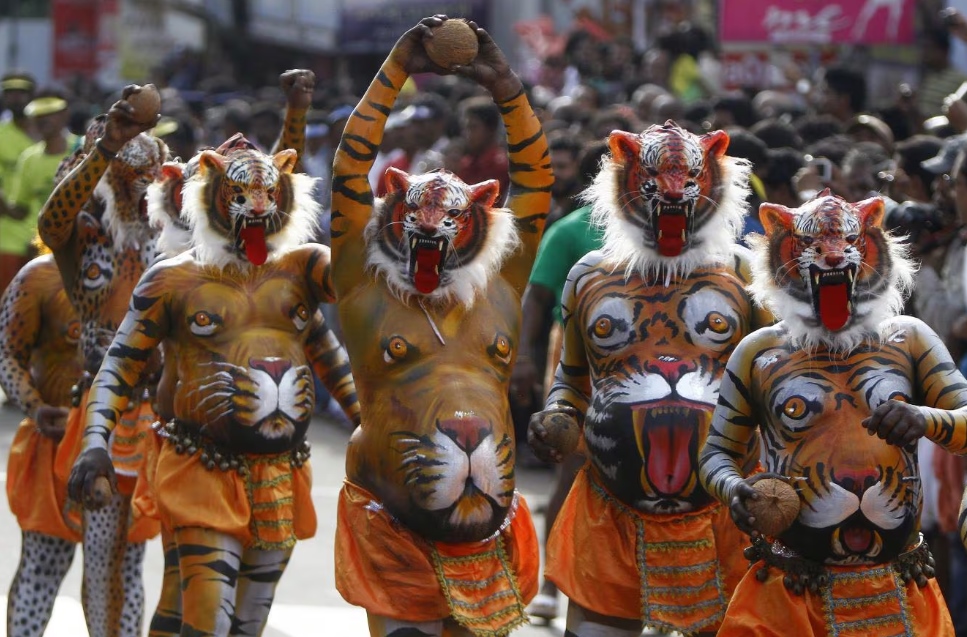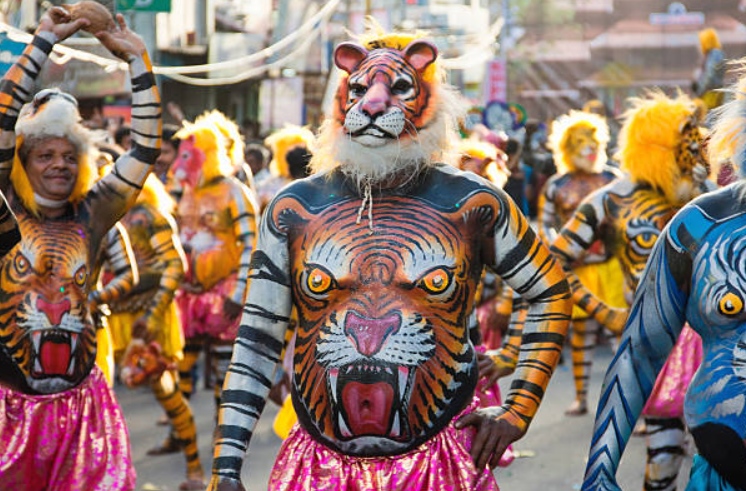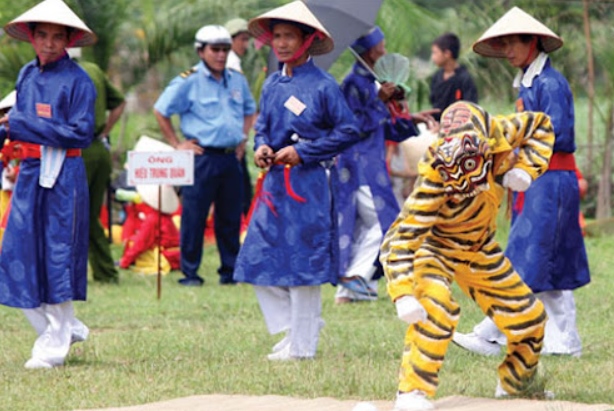Tiger dance is a traditional performing art, wherein the dancers wear tiger-inspired costumes and pull off dance moves resembling how tigers stalk, pounce, and hunt.
This ancient dance style has been recorded in many parts of the whole world, such as India, Vietnam, Japan, Java (Indonesia), and various minor regions.
Table of Contents
Popular Tiger Dances
Tiger Dance in India

In the Indian language, Tiger dance is known as “Puli kali”. It is a folk dance performed for entertainment purposes during Onam celebrations. The tradition started 200 years ago.
On the fourth day of the festival, the dancers will wear costumes with vibrant colors resembling tigers or sometimes leopards. With traditional instruments in the background, they will work their tummies with intense shakes.
Modern Tiger Dance is highly upgraded with premade masks, faux accessories, and even body paints. Therefore, the dancers easily evoke so much excitement from the crowd and enhance the atmosphere of the whole event.
Tiger Dance in Vietnam
Phu Dong village (Hanoi, Vietnam) is the hometown of the Giong festival, which celebrates and honors one of the four divine figures in Vietnamese folklore, who is believed to be the country’s defender.
People will dye a big-sized outfit yellow and decorate it with black stripes like a real tiger. The dancer will wear this costume and a tiger head that people worship and protect all year long.
After the festival, the outfit will be burnt while the tiger head will be preserved for the next annual festival.
Characteristics of Tiger Dance
Like many dances inspired by the moves and habits of animals such as lion dance, the Tiger dance is also a result of a long time observing and mimicking tigers.
A performance of Tiger dance typically includes a series of dance moves from slow to quick pace, gradually building up to a climax.
You will see the dancer describing actions such as rolling on the ground, digging into the soil, keeping watch over the surroundings, stretching muscles, sunbathing, and more.
In Tiger dance, the image of tigers has been made more artistic than ever. The dance moves combine the signature details of the animal and the athleticism of the dancers.
Check more: Volta Dance: Origin, Steps, Musics & More
Conclusion
Tiger dance is a beautiful and energetic cultural practice, seen in many countries and regions around the world. It can be part of religious occasions as well as festive seasons, connecting people to the divine forces and praying for the best luck in life.
If you have an opportunity to visit a local festival and witness the locals in action, don’t be shy to join them!

